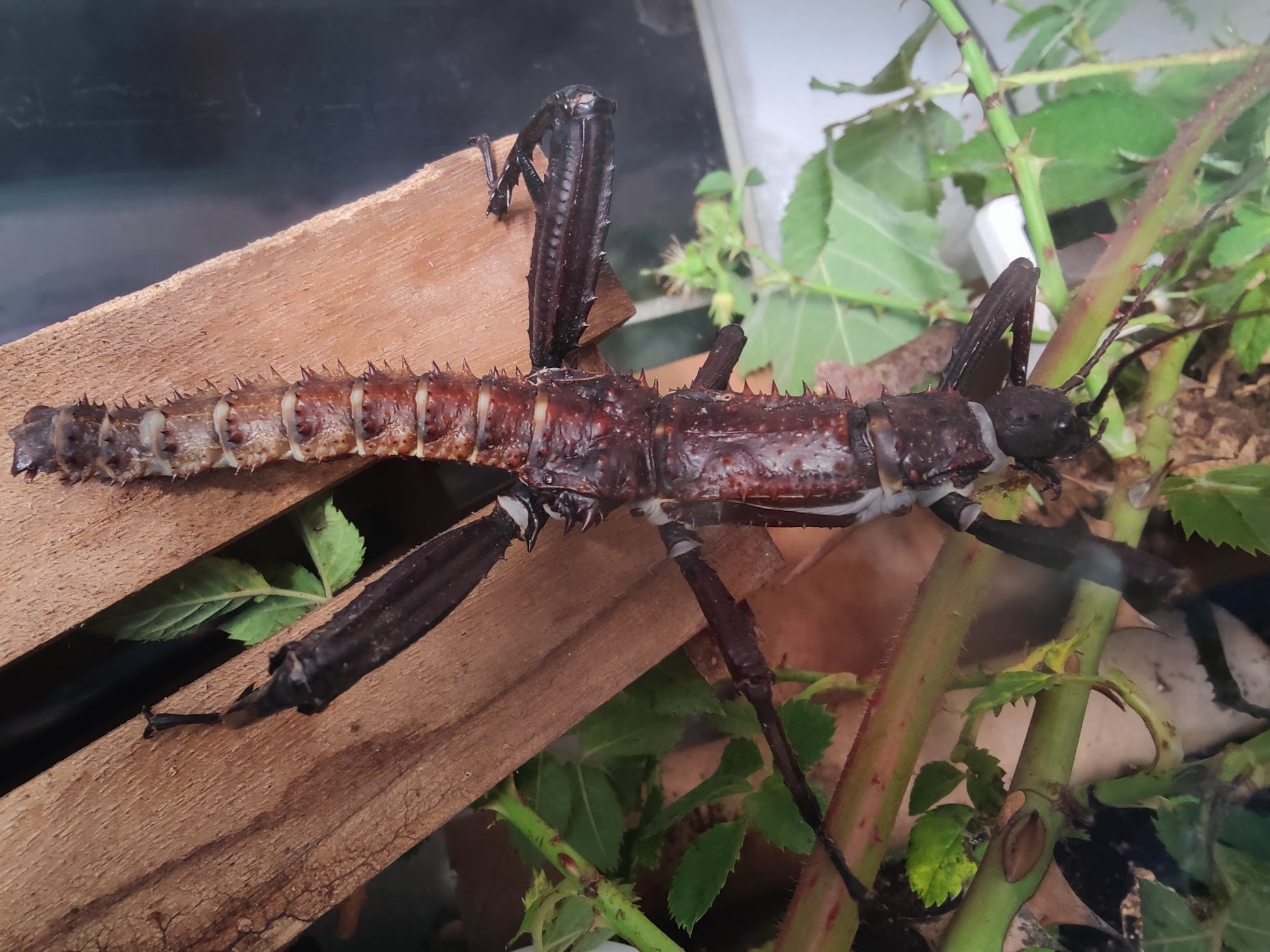
Eurycantha horrida - Giant Spiny Stick Insect one hatchling
Reliable shipping
Flexible returns
🪲 Eurycantha horrida Care Guide
Common names: Giant Spiny Stick Insect, Thorny Devil Stick Insect
Origin: Papua New Guinea
Difficulty: Easy to moderate
Lifespan: 12–18 months on average
🌡️ Environment & Enclosure
-
Size: Adults grow up to 15 cm, so allow plenty of floor space. A 45 x 45 x 60 cm terrarium works well for a small group.
-
Ventilation: Good airflow is important to prevent mould. Mesh lids or side vents are ideal.
-
Temperature: Daytime temps of 22–26°C are perfect, with no need for extra heating in a warm home.
-
Humidity: Keep humidity between 70–80%. Daily misting and moisture-retaining substrate (coir, sphagnum moss, or a mix) help maintain this.
-
Substrate: 5–10 cm of moist substrate encourages burrowing behaviour and egg-laying. Add bark and cork for hides.
🪴 Diet
-
Primary foods: Bramble (blackberry), raspberry, rose, oak, and hazel.
-
Feeding frequency: Replace leaves every 2–3 days or when they start to dry out.
-
Important: Always ensure leaves are free from pesticides or traffic pollution.
🧬 Behaviour & Handling
-
Temperament: Calm and slow-moving. Adults may kick with their spined legs if startled but rarely cause harm.
-
Nocturnal: More active at night; enjoy watching them after lights-out.
-
Burrowing: They often dig or partially bury themselves—this is normal, especially for females laying eggs.
🥚 Breeding & Lifecycle
-
Reproduction: Females lay eggs in the substrate. No special setup is needed beyond a moist floor layer.
-
Egg incubation: 4–6 months at room temperature. Don't dig for eggs—they're sensitive.
-
Nymph care: Hatchlings look like tiny, dark versions of adults. Feed as you would adults but use younger leaves and ensure plenty of climbing space for moulting.
⚠️ Notes & Tips
-
Avoid overcrowding: These insects are chunky and like space. Too many adults can stress the group. It is always best to separate adult males as they will fight.
-
Watch moults: Ensure vertical climbing surfaces and stable humidity during moulting phases.
-
Cleaning: Spot-clean regularly and refresh substrate every 4–6 weeks to avoid mould or mites.
Eurycantha horrida are a brilliant species for both beginners and experienced keepers who enjoy robust, prehistoric-looking insects with fascinating behaviours



